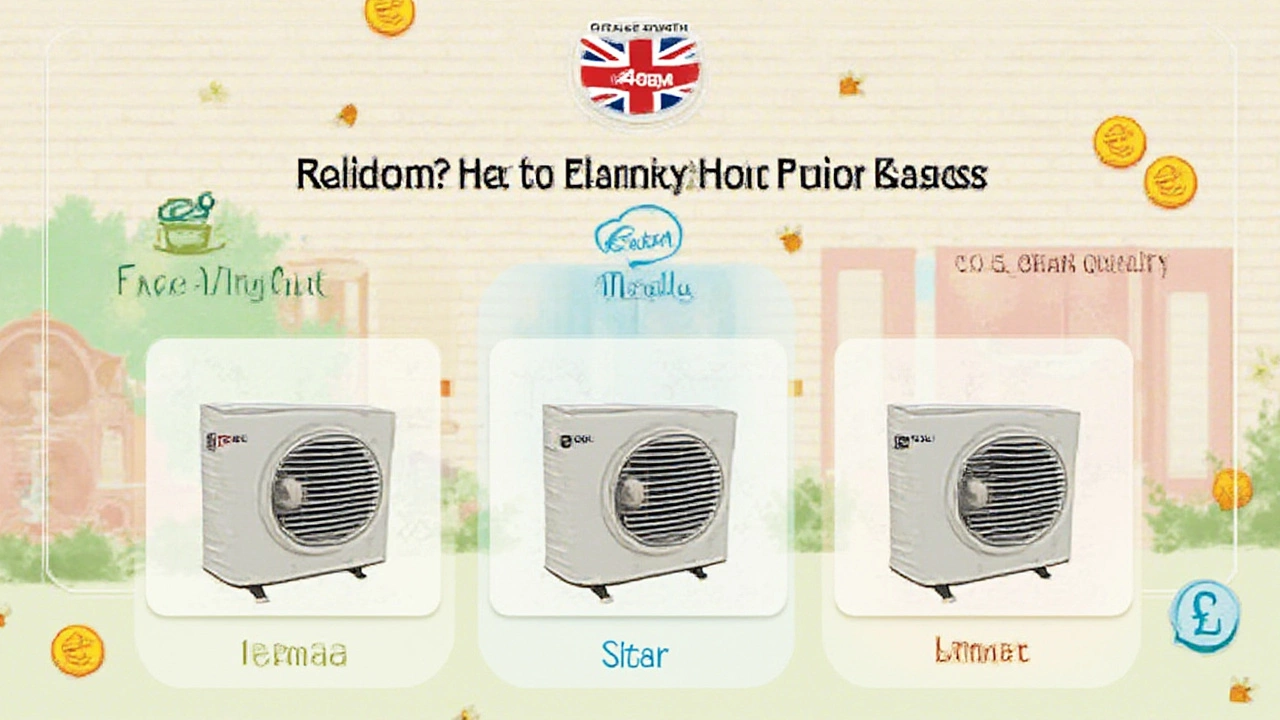Walking into a home cooled by a silent, efficient heat pump feels like stepping into a live commercial. But when the unit goes down on a steamy July evening or a freezing January morning, the dream sours fast. With heat pumps handling both your heating and cooling, their reliability isn’t just a nice-to-have—it’s a must. So, which brand lives up to its promises when real life gets uncomfortably hot or cold?
How Reliability Stacks Up: The Brands That Deliver
The heat pump market is a race packed with contenders, but some names keep popping up in industry surveys and repair records. According to the 2024 Consumer Reports reliability survey, Trane and Carrier heat pumps are the poster children for dependability. Trane’s “It’s Hard to Stop a Trane” slogan isn’t marketing fluff: their units top the reliability charts, with a breakdown rate below 8% over the first eight years. Carrier doesn’t lag far behind, with less than 10% of units reporting a major issue in that same window. Lennox, Goodman, and Rheem also crack the top five, each offering a mix of reliability, warranty, and efficiency.
The trick is that no brand aces every category. Lennox boasts impressive energy efficiency, but its components can get pricey. Goodman is a champion of budget options, with repair costs tending to be lower, but some models reveal their flaws early. American Standard is, fun fact, basically Trane with a different badge, and shows similar track records. What tips the scales for homeowners? It’s usually the blend of warranty coverage, part quality, and, honestly, how easy it is to find a tech who knows the brand.
What Makes a Heat Pump Reliable?
Reliability isn’t magic, but the recipe isn’t obvious at first glance. Think about this: The best brands usually share a few key ingredients. First, quality compressors. Trane, for instance, uses their own Climatuff compressors, famous for staying cool under pressure and rarely going bust. Second, sturdy cabinets and weather-resistant parts. Carrier shields its units against corrosion and debris, which matters more than you’d think if your unit lives outside through every season. Third, smart design—good brands leave techs enough space to actually fix problems, which means fewer botched repairs.
Something people forget? Testing. Trane runs units through “SEET labs” in Texas, throwing everything from floods to voltage spikes at them before you ever see one in your backyard. Carrier puts its Infinity models through 1,000+ hours of salt-spray testing. Because heat pumps aren’t set-it-and-forget-it gadgets, controls and sensors matter too. The smarter the defrost cycles and temperature sensing, the less likely you’ll wake up freezing at 2 AM.
Installation can kill even the best brand’s record. Almost half of early failures come down to install mistakes—wrong refrigerant levels, weak airflow, or skipped steps. Brands with strong dealer training (again, Trane and Carrier score above average here) have fewer of these headaches. A shiny new unit from a “reliable” brand won’t help if your installer treats the manual like a coaster.

Heat Pump Longevity: By the Numbers
Ever wonder how long heat pumps really last before you’re left sweating or shivering? On average, a well-made heat pump chugs along for 12-15 years if serviced right. Trane and Carrier models, according to 2023 and early 2024 field data, commonly cross 18 years without major surgery. Compare that to some value brands where 10-12 years is about all you’ll get before major repairs or noisy operation force a replacement.
Seasonal Energy Efficiency Ratio (SEER) and Heating Seasonal Performance Factor (HSPF) scores can hint at unit quality. The most reliable models often have SEER2 ratings above 18 and HSPF2 values over 9.0. Here’s a simple table to help you see where key brands land:
| Brand | Average Lifespan | Breakdown Rate (8 yrs) | Max SEER2 | Max HSPF2 |
|---|---|---|---|---|
| Trane | 15-20 years | ~8% | 22 | 11 |
| Carrier | 15-18 years | ~10% | 22 | 11 |
| Lennox | 12-16 years | ~12% | 24 | 10.4 |
| Goodman | 10-14 years | ~15% | 18 | 9.5 |
| Rheem | 12-15 years | ~13% | 20 | 10 |
Some tips here: Regularly change air filters, keep vines and debris clear from your unit, and book pro maintenance yearly. That alone cuts down emergency calls by a third and can keep warranties in play.
Warranty and Service: What the Fine Print Really Means
A long warranty sounds like peace of mind, but it’s worth digging into the details. Trane offers a 10-year parts limited warranty—but only on registered units. Carrier echoes them, though some models offer “comprehensive” coverage for compressors (the heart of the system) up to 12 years. Goodman, surprisingly, punches above its weight with a solid 10-year warranty that’s easy to transfer if you sell your home. Lennox’s standard plan is shorter, though they sometimes sweeten it through dealers.
What’s the dealbreaker in the fine print? Labor isn’t usually covered after year one, so you’ll pay out-of-pocket for installation or repair visits after that point. That’s true across brands, so it pays to ask your installer about their own service guarantee. Most complaints to the BBB or state authorities come from warranty confusion, not outright product failures. Save headaches by registering your unit, keeping receipts, and getting installation paperwork in order.
Don’t skip the service network, especially if you live in rural areas. Trane and Carrier both maintain deep dealer networks, making it easier to find factory-trained techs. Goodman’s network is broad, but some regions rely on third-party service. Parts availability can make or break your experience when a small sensor gives out in the middle of a cold snap.

Real-World Tips for Picking the Most Reliable Heat Pump
Don’t be shy—ask local HVAC pros which brands they’d put in their own homes. Pros rarely let loyalty blind them to the weak spots of major brands, especially if they’ve spent years crawling around attics and basements. If three out of four pros keep coming back to Trane, Carrier, or American Standard, there’s a reason. Ask how many warranty claims they see, and what’s hardest to get parts for locally.
Check the online reviews, but zoom in on comments about noise, after-sale support, and whether homes stayed comfortable at both temperature extremes. Ignore reviews focused only on price or installation, unless they flag a pattern of failures.
Here are some quick takeaways to steer you the right way:
- Hire a licensed installer who specializes in your chosen brand.
- Scrutinize the installation process—ask for pictures, checklists, and double-check that all settings match your climate needs.
- Register your new system immediately—don’t lose years of coverage because of a missed deadline.
- Schedule annual checkups, and keep a simple log of maintenance and any service calls.
- Don’t skimp on sizing: a unit that’s too big or too small will work too hard and break early.
Bottom line, most reliable heat pump isn’t just about the sticker on the outside—it’s quality design, strong installation, and backup when things go wrong. If you want something that’ll keep your coffee hot in January and your living room cool in July without emergency repair calls, you’re playing a long game. Find a brand with a solid track record, set it up right, and you’ll barely think about it again—just the way it should be.
